When That Wallpaper Has to Go, Follow These Steps to Remove It Easily
"Hearst Magazines and Yahoo may earn commission or revenue on some items through these links."
Maybe a few years ago your family was in love with a forest-printed accent wall, and now it looks tacky. Or you recently moved into a new home, and you have some cute wallpaper in what used to be a toddler’s room, but it doesn’t make sense in your new office. Either way, the wallpaper has to go.
What’s tricky about removing wallpaper is that it’s hard to gauge how long it’ll take until you actually start. In general, the amount of time it takes to remove wallpaper will depend on the type of wall and the kind of wallpaper you have. There's no shortcut for removing wallpaper. It's a messy and time-consuming job, but with the right tools, anyone can do it.
[table-of-contents] stripped
Types of Wallpaper
The first thing you’ll want to do is determine which kind of wallpaper you have. You can do this by picking at a small corner and trying to remove it. If you’re lucky, it’ll be peel-and-stick wallpaper. This one comes off easily in one layer and does not usually leave any marks on the wall. You can probably remove a whole wall with peel-and-stick wallpaper in ten minutes.
However, other types of wallpaper stick to the wall with an adhesive and take more time to remove. The main kinds of wallpaper with adhesive are pre-pasted (paste is already on the back) and non-pasted (paste has to be applied before sticking to the wall). Wallpapers typically have two layers: the paper that sticks to the wall and then a vinyl or another water-resistant layer with the actual pattern. Yes, this means you’ll have two layers to remove with non peel-and-stick wallpapers.
Type of Walls
Homes built since the 1950s have walls that are constructed using drywall, whereas older homes have walls made of plaster over a wood, gypsum, or metal lathe. Removing wallpaper from drywall can be a bit trickier, as the drywall surface can bond to the wallpaper, making removal of the wallpaper nearly impossible without damaging the wall. Plaster-built walls usually don't have the same issue.
If you are unsure about what type of wall you have, remove a wall plate around a light switch and look at the exposed section of the wall. Drywall will be thinner and more uniform than plaster, which is usually troweled right up to the electrical box.
Even if your home is older, there could be drywall in place because of a recent remodel or renovation. It's always good to check before proceeding with wallpaper removal.
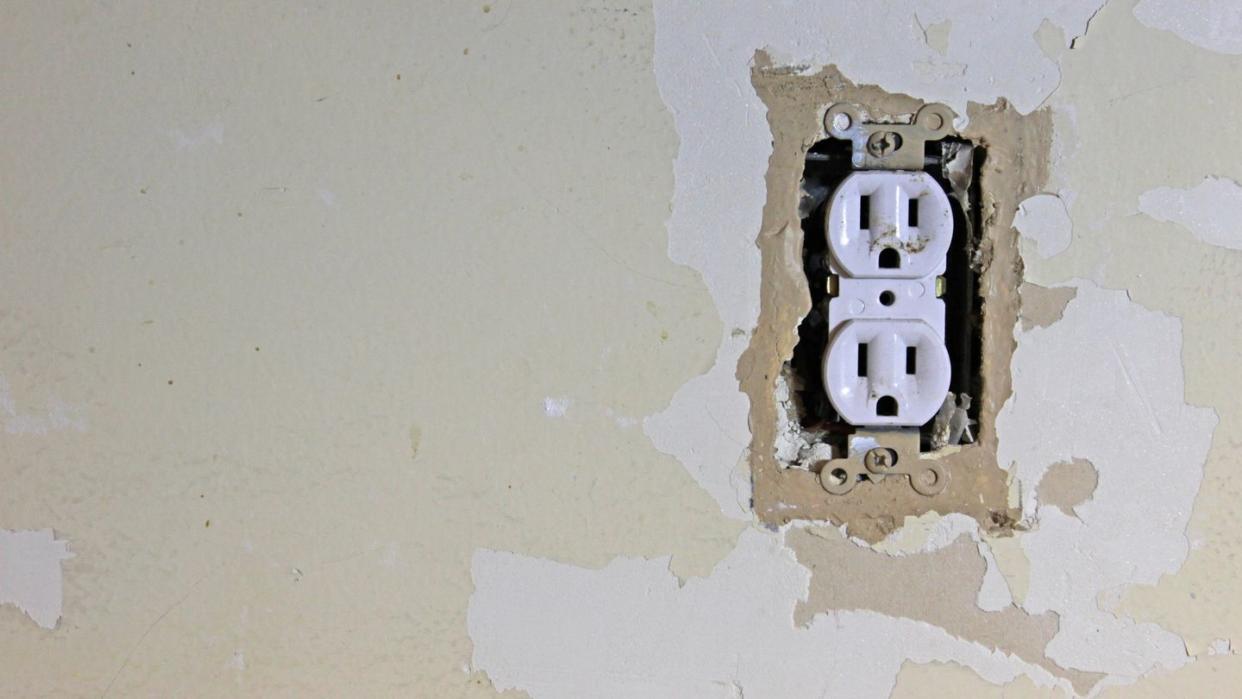
Steps to Removing Wallpaper
Remove wall plates from light switches and outlets and tape over the outlet and switches to prevent water and moisture from getting on them. Lay down a drop cloth or poly sheet to prevent wet wallpaper from ruining your floors, and tape over floorboards and wainscoting so you don't damage them during this process.
To remove the top layer, find a corner and separate the top layer from the paper underneath. Then pull the vinyl away from the wall. Hopefully, you’ll be able to remove large chunks without the vinyl breaking. It’s likely this will not be a seamless process, however. As you would rip off packing tape, you’ll have to pick at the edges to unstick it. If you’re not having luck getting an edge to unstick, spraying some water on it may do the trick.
Once you remove the entire top layer, step two is to remove the adhesive layer. To do this, it’s best to work in patches, otherwise, the paper will dry before you have a chance to remove it. Consider a section like 3 feet x 3 feet. Lightly spray the area with water or use a sponge to dampen the adhesive layer. It's best to start from the top of a wall and work your way down, just in case the water is going to drip. You’ll want to be careful not to use too much water so as not to damage the wall.
Once the entire area of paper is wet, you can wait around five to ten minutes. This allows the adhesive to soften, so it’s easier to remove. Then you can peel the wallpaper off using a scraper or a putty knife. It should come off easily. Don’t expect this process to be seamless, though. You probably won’t be able to remove the paper in one easy swoop. More likely, the paper will rip and you’ll have to sit there trying to get everything off all the way with a scraper or putty knife.
Garden Sprayer
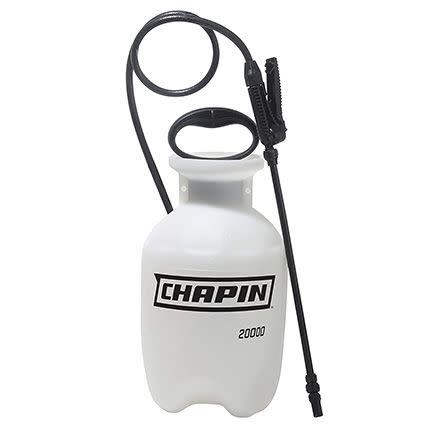
Garden Sprayer
$13.97
Wallpaper Stripper Solution
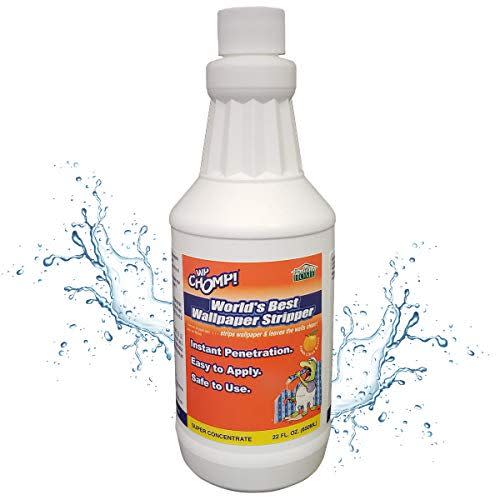
Wallpaper Stripper Solution
amazon.com
$13.97
Plastic Razor Scraper
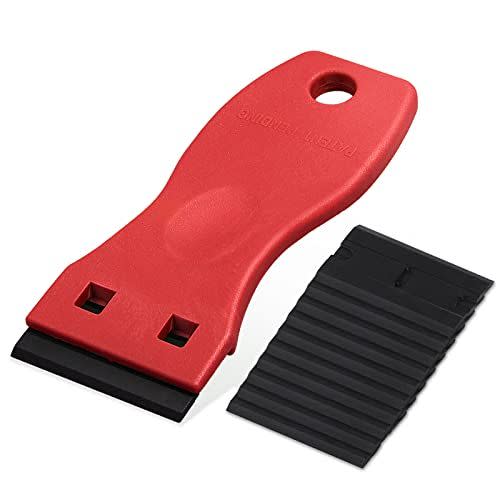
Plastic Razor Scraper
amazon.com
$7.99
Full Flex Putty Knife
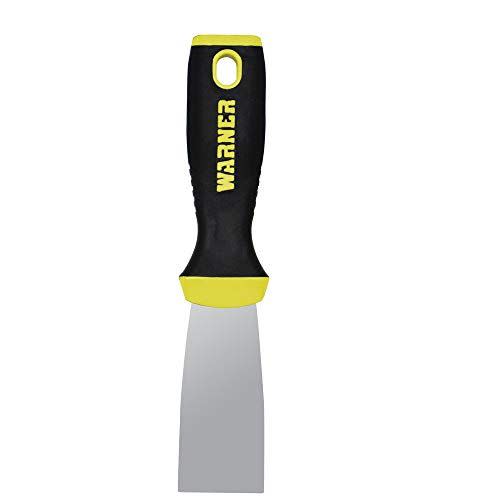
Full Flex Putty Knife
amazon.com
$3.99
How Will the Walls Look?
How your walls look at the end of this process really depends on whether or not they were painted before. If they have been painted, the adhesive layer will be a lot easier to remove and the walls will look cleaner. Chances are good they will look almost exactly the same once you are finished. Depending on the paint, there may be a slight sheen remaining if you look closely at the wall. However, the walls will be clean and undamaged and unless there is a specific circumstance, you will not have to repaint them.
If the walls haven’t been painted, there’s a chance the water will seep through and damage them. It will also mean the removal process will be more difficult.
In this case, you may find you need additional tools to remove the adhesive layer. A steamer may be necessary if your wallpaper is particularly hard to remove or not budging. If the top layer of the wallpaper is not coming off easily, you can consider using a scorer, which will poke holes in the wallpaper and make it easier for the water to seep into the adhesive. The risk in using a scorer is that you’ll leave marks on the wall.
However, while there are many wallpaper removing products out there, the most reliable method of removing adhesive is with water. It’s best to give this a real try before moving on to other products. Using a water spray or sponge may be cumbersome, but generally works and it is the best way to ensure the walls will remain undamaged.
How Long Will It Take to Remove Wallpaper?
It’s completely possible to remove wallpaper on your own but be prepared to spend a good amount of time on it. Multiple days for a small area like a kitchen is a good timeframe. You can expect that some sections will be harder to remove than others, and no matter what, it’s a time-intensive process. Or, who knows, you might get lucky and removing your wallpaper will be as easy as it looks in DIY videos.
You Might Also Like
